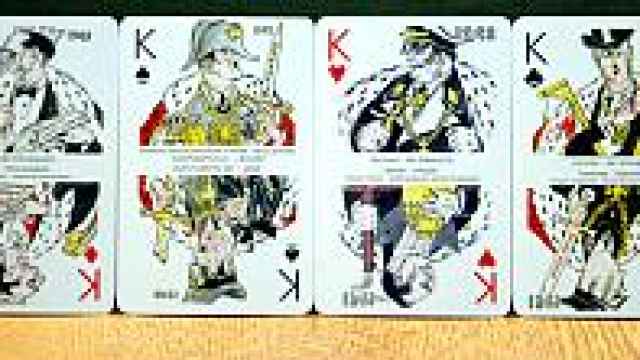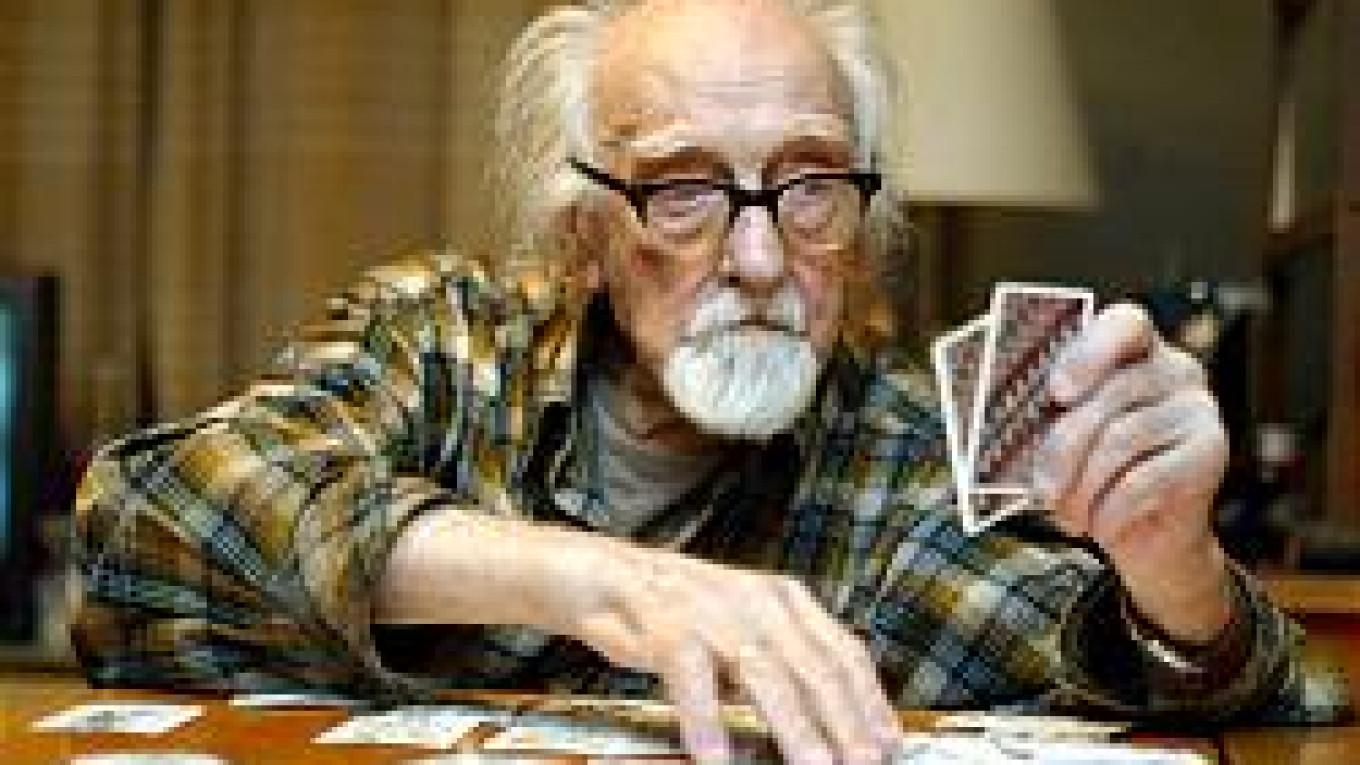The deck of 36 cards, commissioned by the Politburo, bore slogans mocking the Nazi leaders and their allies and were intended to incite Nazi soldiers to surrender during the Leningrad siege, which was broken 60 years ago Tuesday.
"The fronts were stationary, and at that time the idea of creating the cards was born," Kharkevich, 91, said in an interview. "Cards are a very convenient form of agitation."
Kharkevich started work on the cards in 1943. The two halves of each card were separated by the names and positions of each leader in Russian. A poet wrote sarcastic phrases between the halves, in Russian and German. The reverse side was encrypted with anti-fascist slogans to be decoded by Nazi soldiers.
The aces were the German industrial and financial holdings that backed Adolf Hitler. Hitler was the king of spades, with Hermann G?ring, Joseph Goebbels and Heinrich Himmler also kings. The queens were caricatures of Axis powers Hungary, Finland and Romania, with Italian dictator Benito Mussolini as the queen of spades. The jacks featured the heads of the navy and army.
"The whole editorial department decided how to draw the cards," Kharkevich said. However, it was he who created the original designs.
Although he can't remember exactly how long he worked on the cards, he said it was at least a month. He worked day and night, painting the deck by hand. No deadline was given, but his chief hounded him, constantly reminding him to complete the deck "the sooner the better."
"I was hurrying because it was wartime and everything had to be done very quickly," Kharkevich said. "But I was young and did everything quickly. I don't know how long it would take nowadays.
"When the cards were ready in 1943, our attacks started. The fronts began to move and the Germans started to retreat. Then we didn't need the cards anymore. No one plays cards when front lines are shifting."
 Sergey Grachev / MT The kings in Ivan Kharkevich's deck of Nazi cards are Joseph Goebbels, Adolf Hitler, Hermann Goering and Heinrich Himmler. | |
Kharkevich saw his originals for the first time in 20 years when an NTV reporter brought them to him last week.
The cards "are interesting from the point of grotesque politics," said Vera Pozdnyakova, a spokeswoman for the Museum of the Breaking of the Siege.
"They were made by anti-fascists who tried to look with irony at the countries, politicians and generals who started the war," she said. "This approach is of great interest -- looking at the war from a satirical and humorous point of view."
These days, Kharkevich's memory is patchy, he is hard of hearing and slurs his speech from time to time. He lives with his wife of 52 years, Galina, 76, in a one-room apartment. He is not nostalgic for the Soviet era. "I am very happy that we have democracy, although it is only a vague resemblance of democracy. But we have hope," he said.
"I wonder why people praise Stalin nowadays. I can't understand it after he killed so many innocents."
A Message from The Moscow Times:
Dear readers,
We are facing unprecedented challenges. Russia's Prosecutor General's Office has designated The Moscow Times as an "undesirable" organization, criminalizing our work and putting our staff at risk of prosecution. This follows our earlier unjust labeling as a "foreign agent."
These actions are direct attempts to silence independent journalism in Russia. The authorities claim our work "discredits the decisions of the Russian leadership." We see things differently: we strive to provide accurate, unbiased reporting on Russia.
We, the journalists of The Moscow Times, refuse to be silenced. But to continue our work, we need your help.
Your support, no matter how small, makes a world of difference. If you can, please support us monthly starting from just $2. It's quick to set up, and every contribution makes a significant impact.
By supporting The Moscow Times, you're defending open, independent journalism in the face of repression. Thank you for standing with us.
Remind me later.


